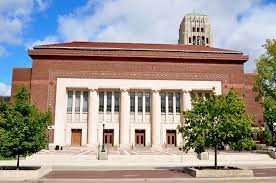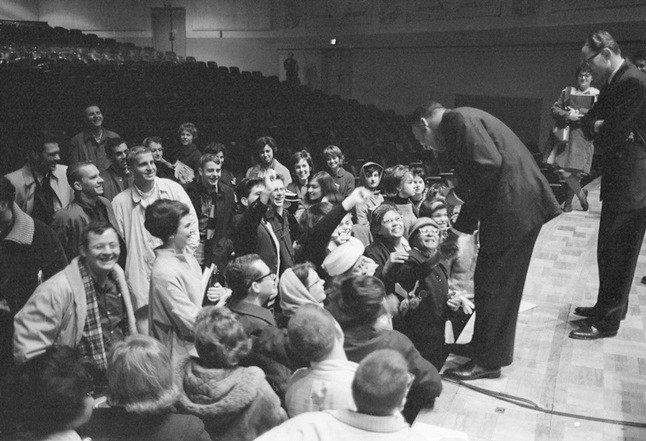Hill Auditorium
Introduction
Text-to-speech Audio
In 1962, Hill Auditorium, where we’re standing right now, bore witness to two of Dr. Martin Luther King Jr.’s powerful addresses regarding nonviolent protest, integration, and education––a mere six months before his iconic “I Have a Dream” speech in Washington, DC. Dr. King emphasized the importance of civil disobedience, rallying thousands of supporters and those passionate to change the fundamental problems in US society at the time. The effects of historic moments in the 60’s like MLK’s visit foreshadowed future civil rights activism at the University of Michigan.
Images


Backstory and Context
Text-to-speech Audio
A few years later, in 1968, in the wake of Dr. King's tragic assassination, the Black Action Movement (BAM)—composed of black students, faculty, and allies—emerged with its first protest that focused on addressing issues of racial inequality and underrepresentation on campus. A multitude of reasons caused the formation of BAM, including the broader Civil Rights Movement's evolution, the changing political climate, and increased awareness of racial injustice. BAM rallied for equality and justice, bringing together hundreds of students, faculty, and community members. The group created a new dynamic on campus for black students to be able to express how they felt they were being treated by the University of Michigan. Their movement encompassed bold demands, grand goals, and ignited a call to action that resonates through the ages.
At the time, Black students comprised 2.9% of the University student body. BAM demanded the University to implement a 10% black enrollment rate, which represented the percentage of Black people living in the state of Michigan. Although unsuccessful in implementing a new enrollment rate, the legacy of the Black Action Movement is felt to this day. It led to a surge in awareness about the Black student enrollment and the establishment of the Department of Afroamerican and African Studies (DAAS). BAM's legacy extended beyond campus, inspiring student activism nationwide and contributing to the ongoing fight for racial equality in higher education. But despite this success, after 50-plus years of activism, the University is far from reaching the 10% enrollment goal––Black students currently make up around 5% of student enrollment today, despite composing 14% of the state’s residents.
Sources
Erdody, David. “Revisiting forgotten images from MLK's 1962 visit to U-M.” University of Michigan Human Resources. https://hr.umich.edu/revisiting-forgotten-images-mlks-1962-visit-u-m.
Johnson, Matthew. Undermining Racial Justice: How One University Embraced Inclusion and Inequality. Ithaca: Cornell University Press, 2020.
University Library MLK Planning Committee. Michigan's Story: The History of Race at U-M (online exhibit). University of Michigan Library. https://apps.lib.umich.edu/online-exhibits/exhibits/show/history-of-race-at-um.
